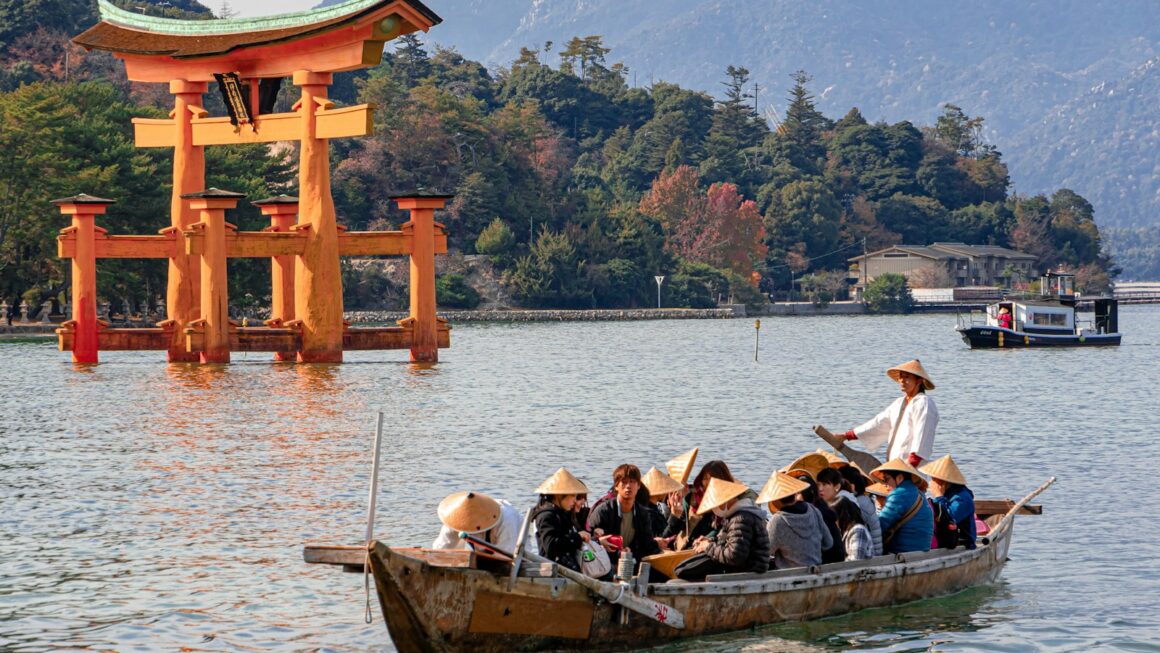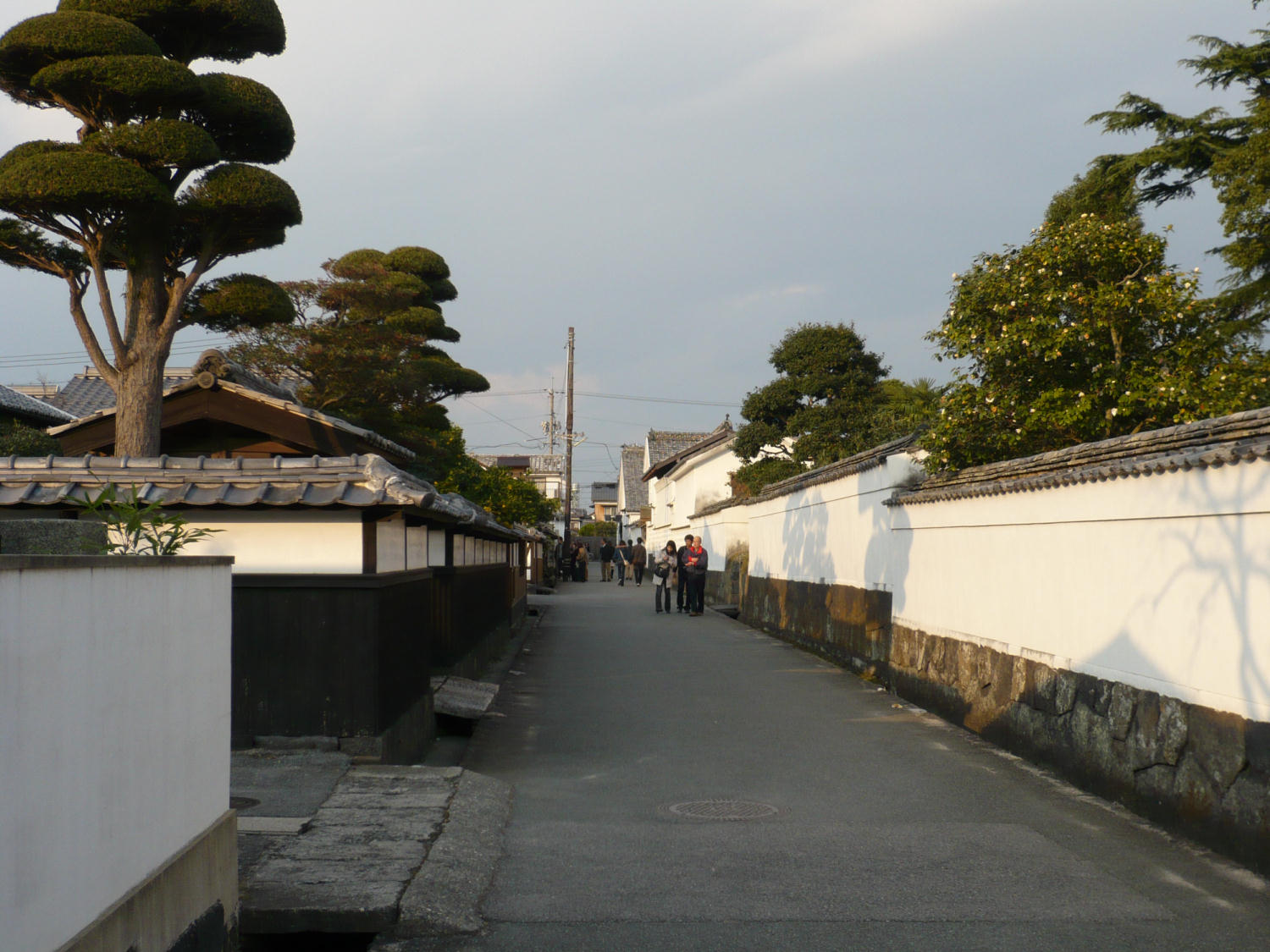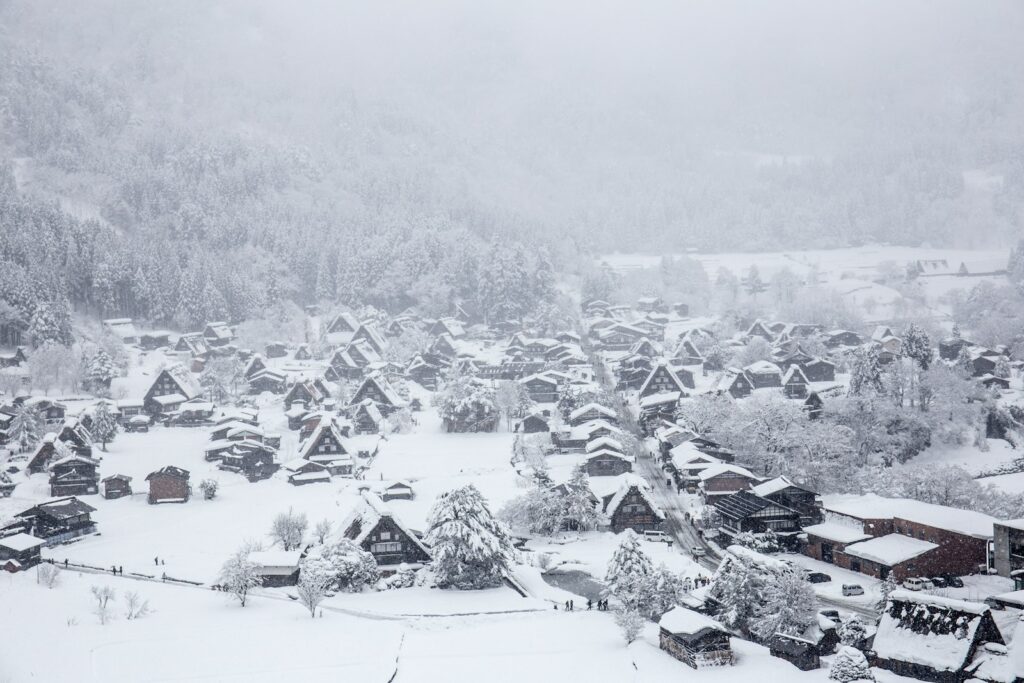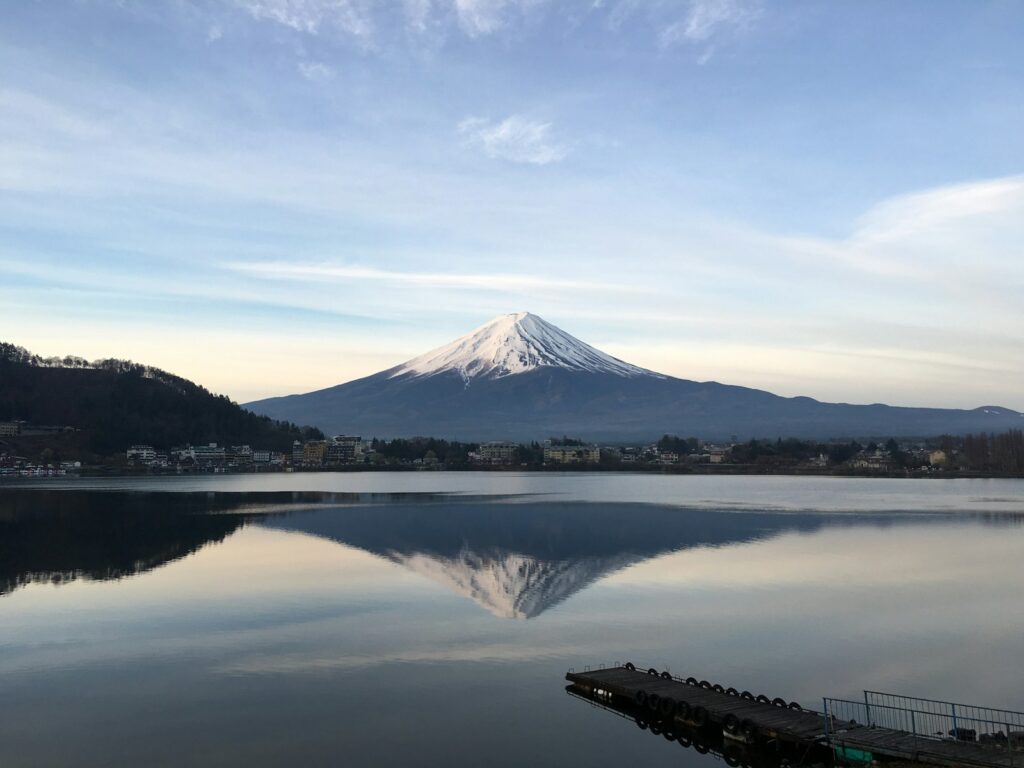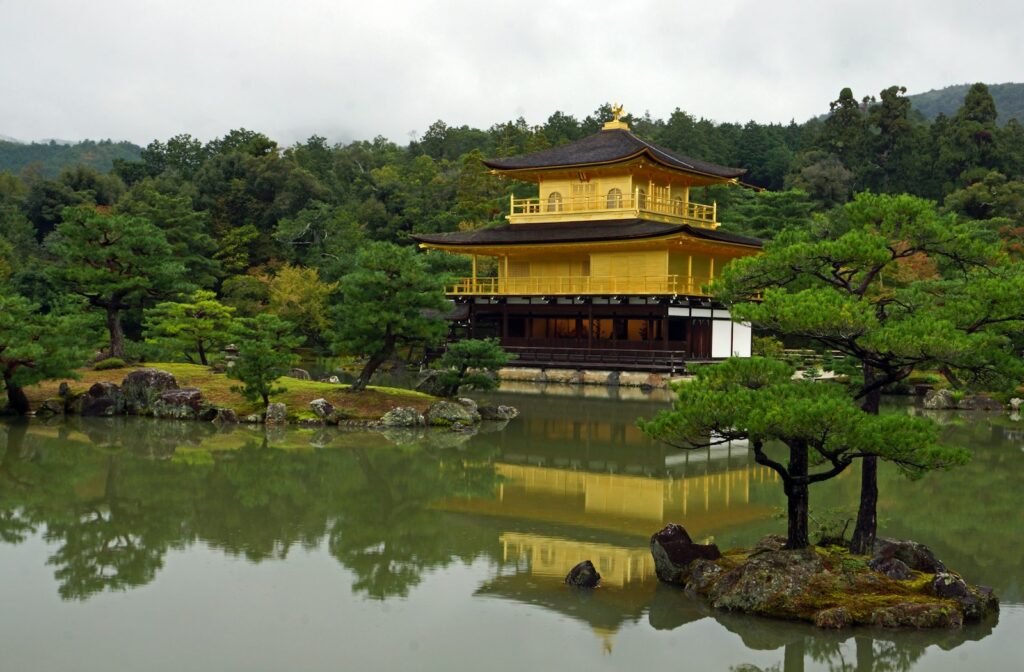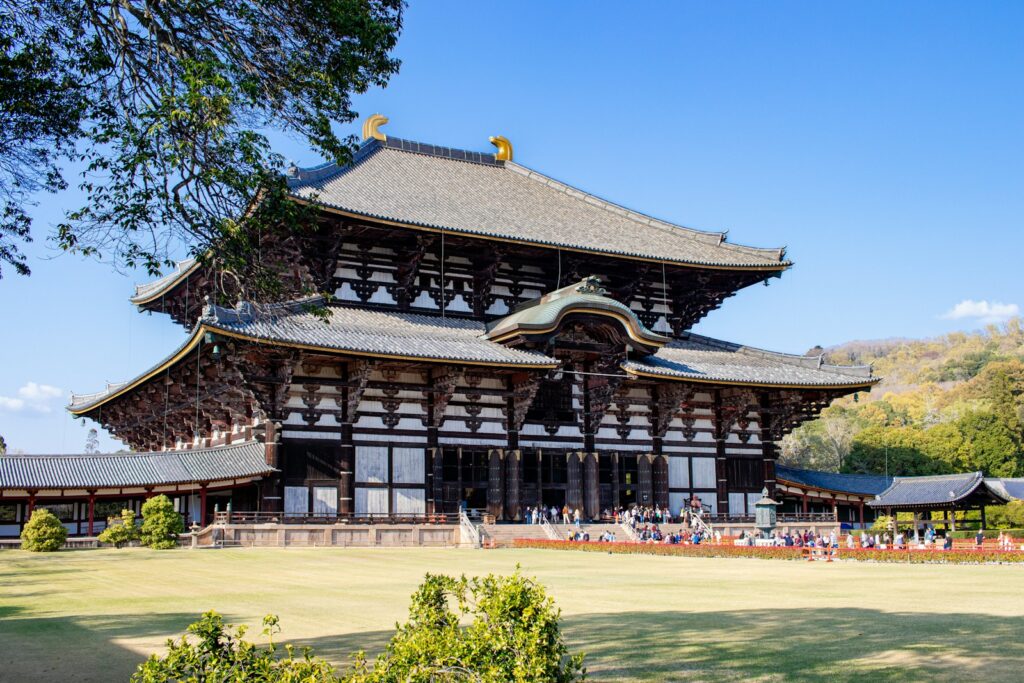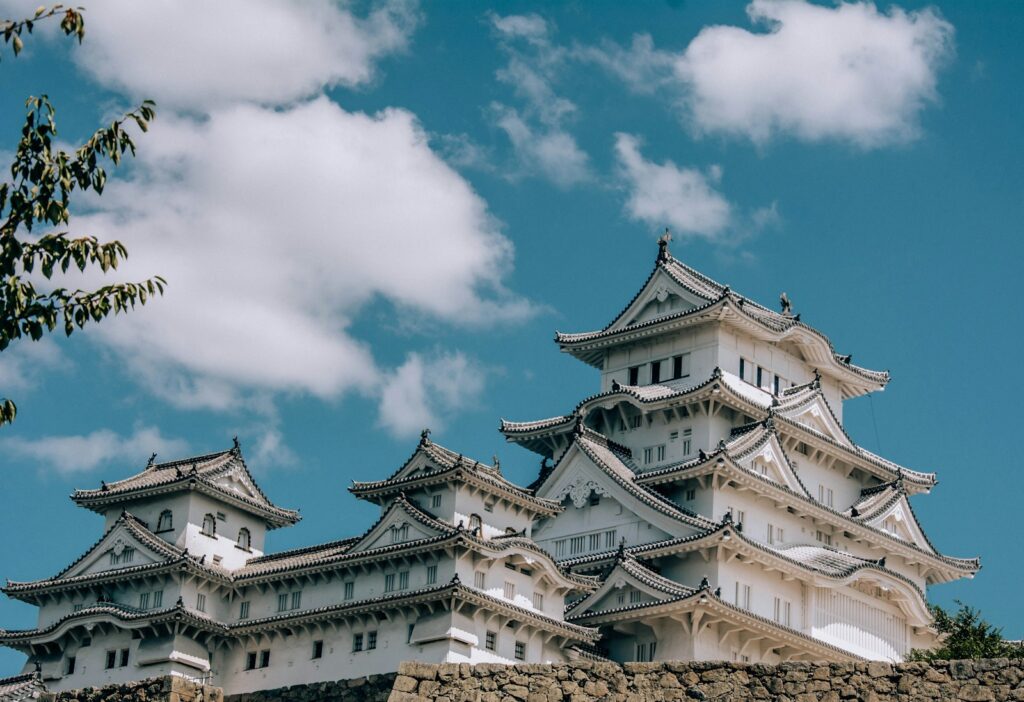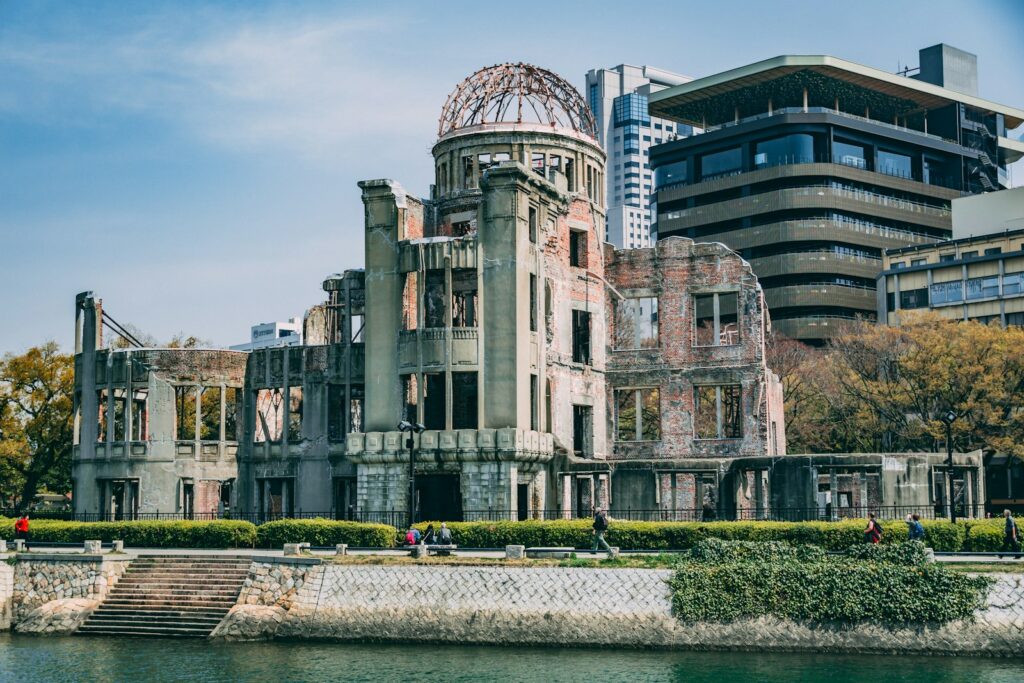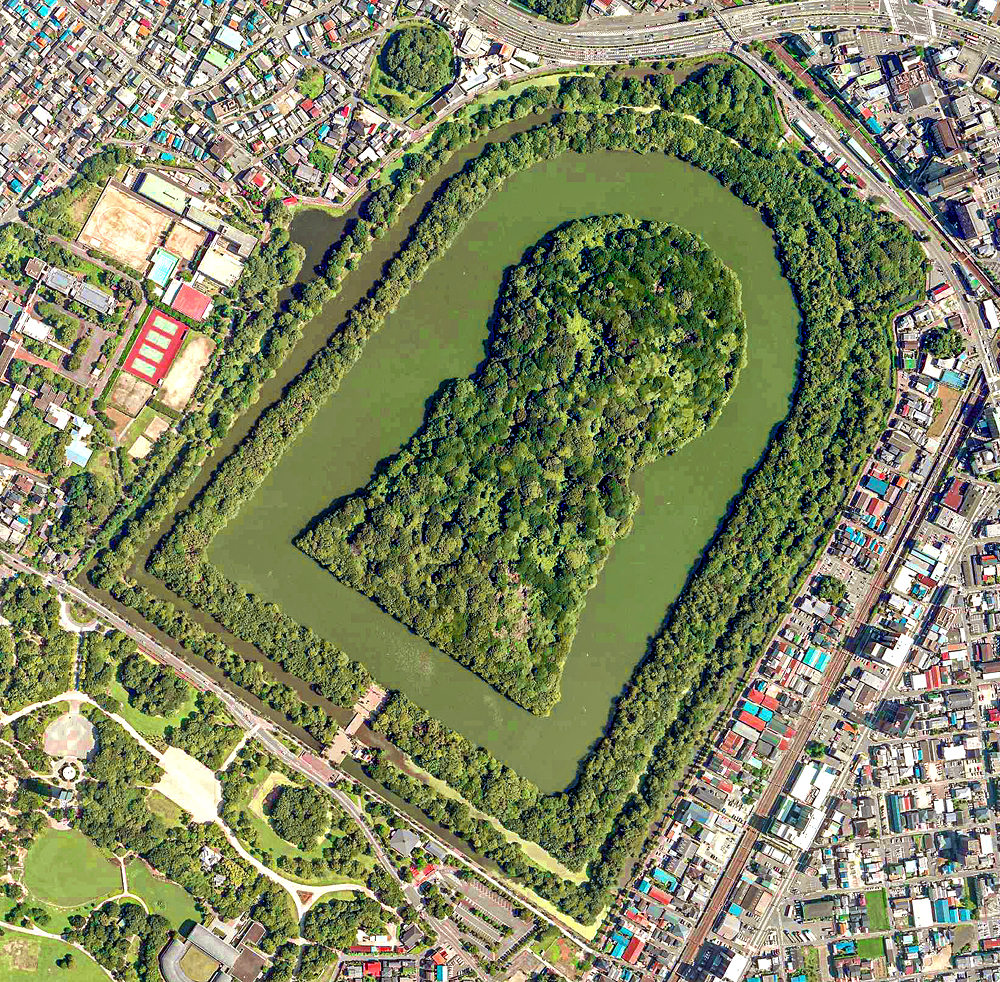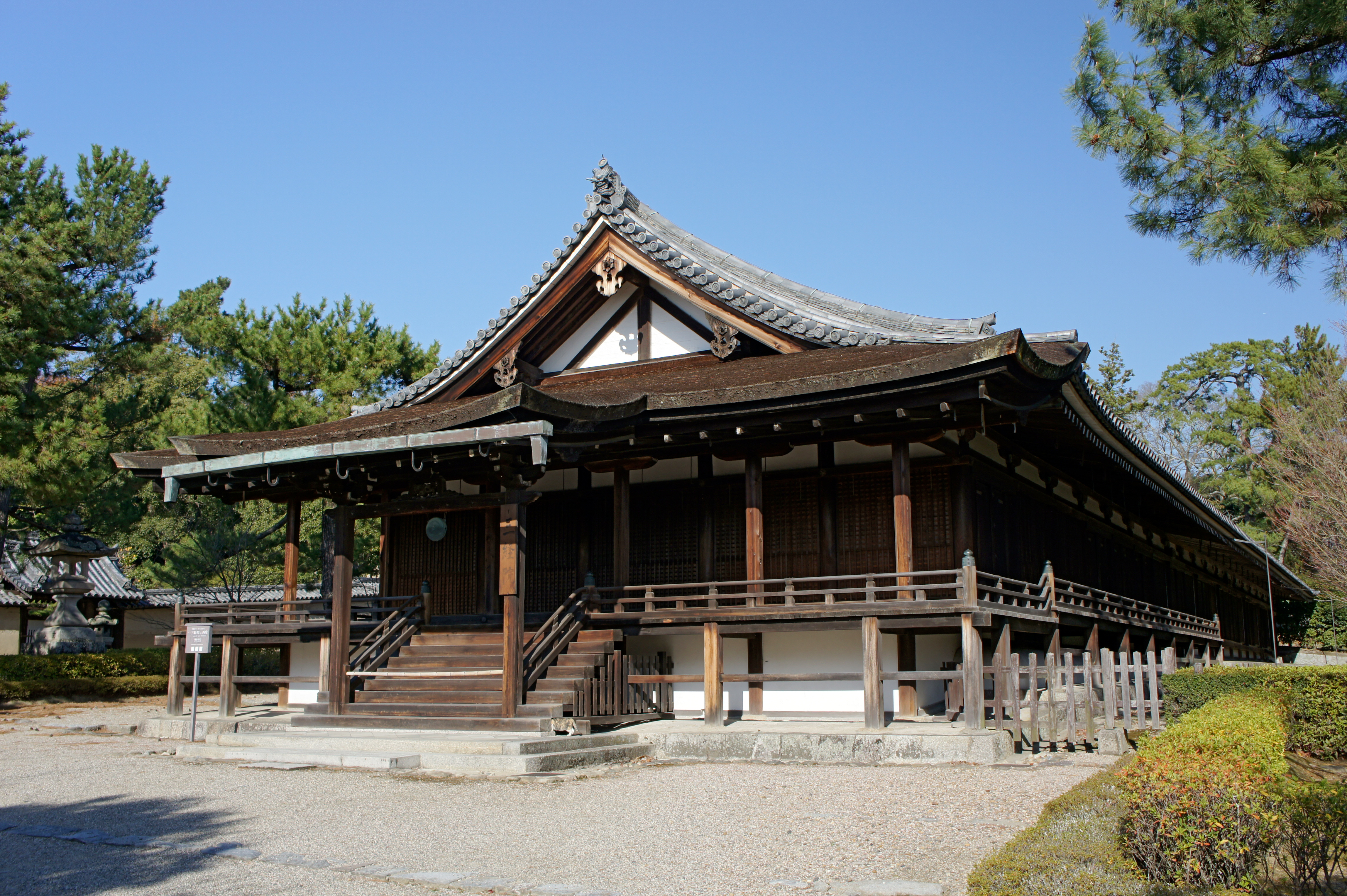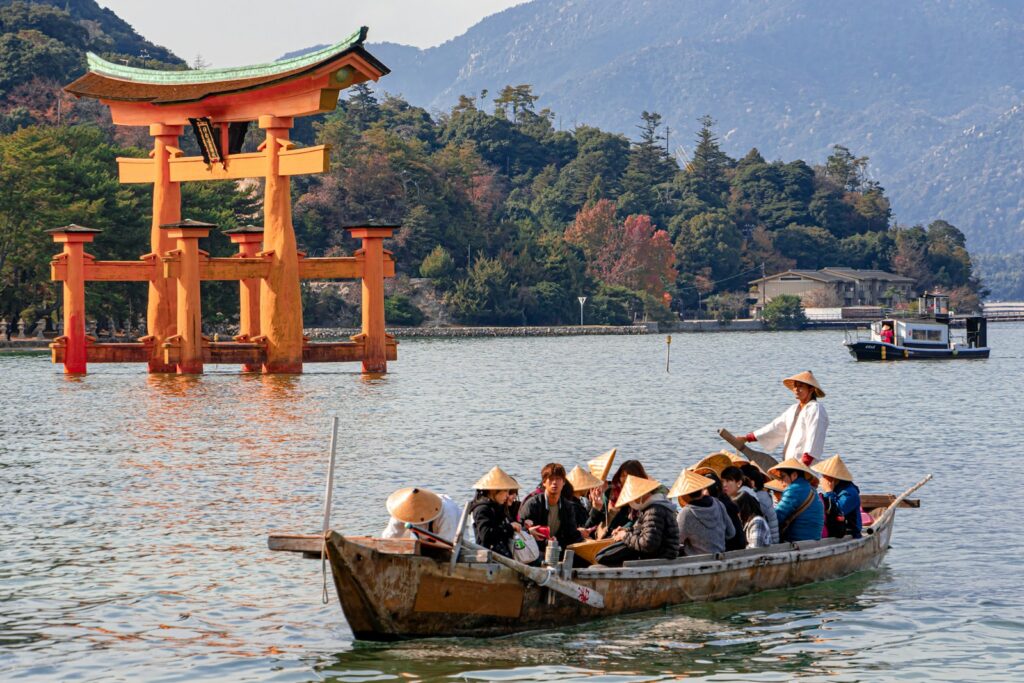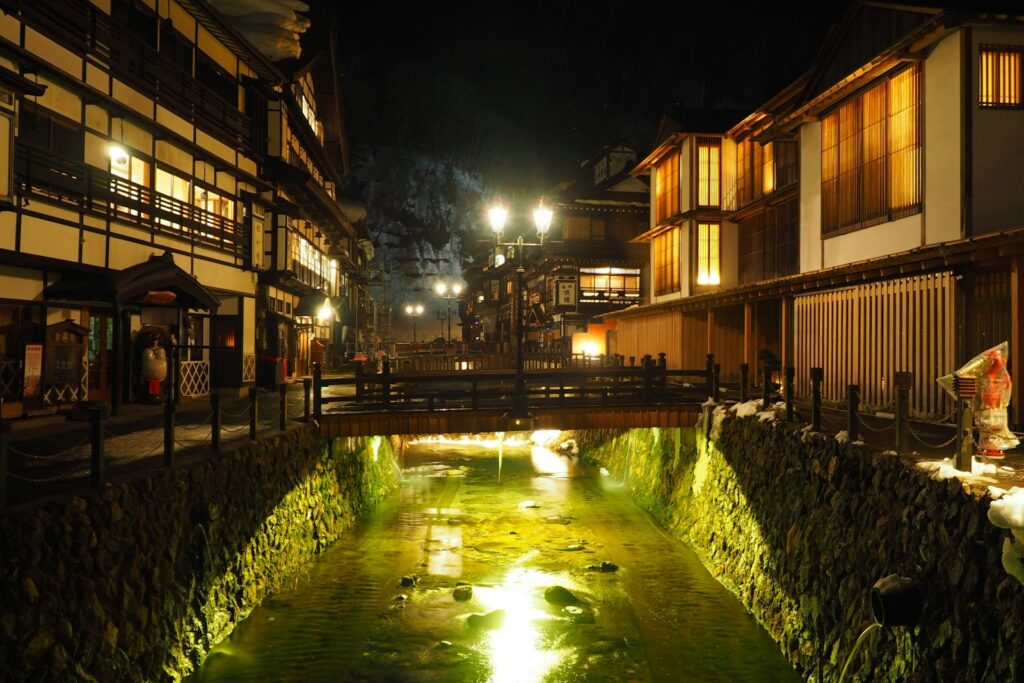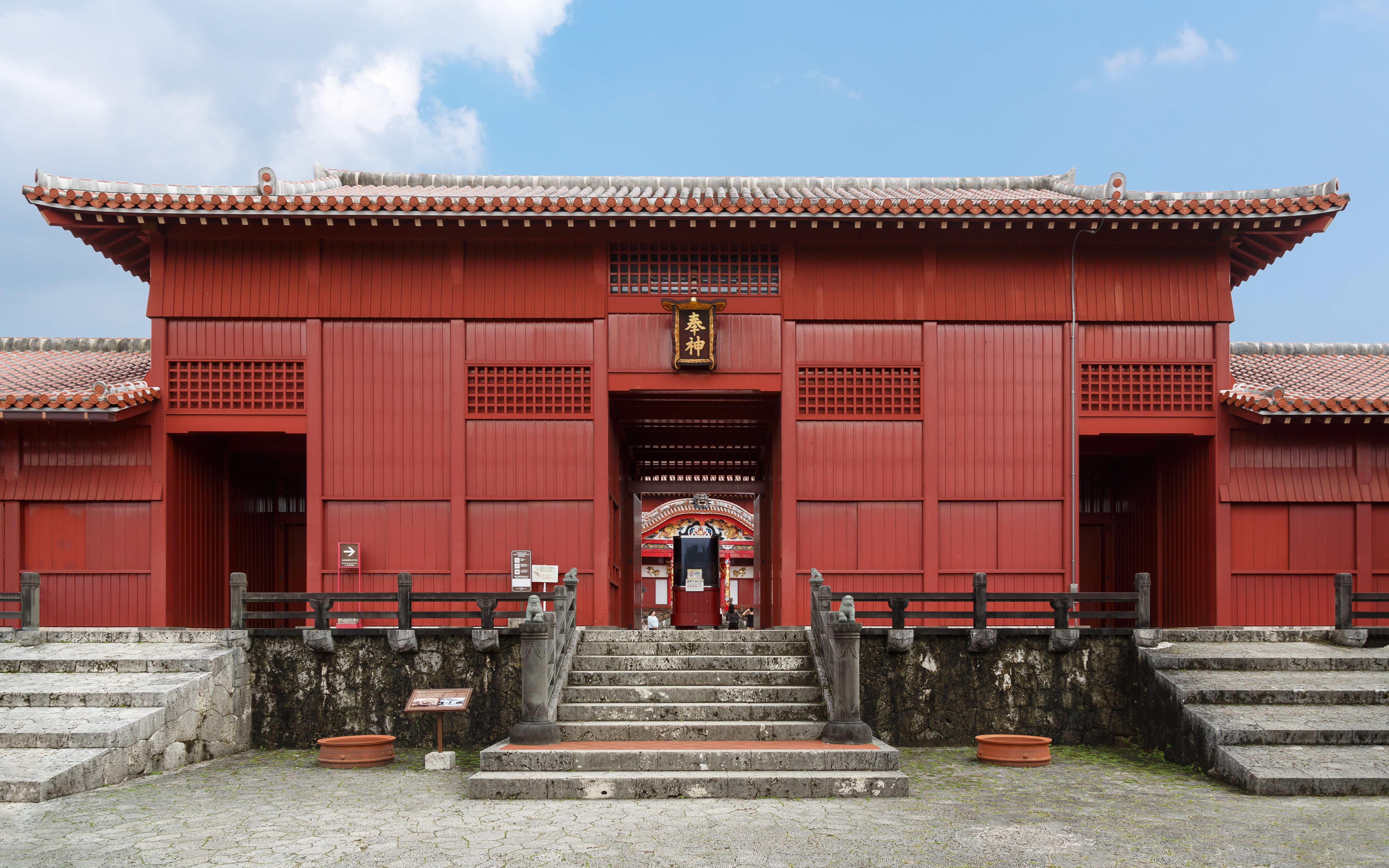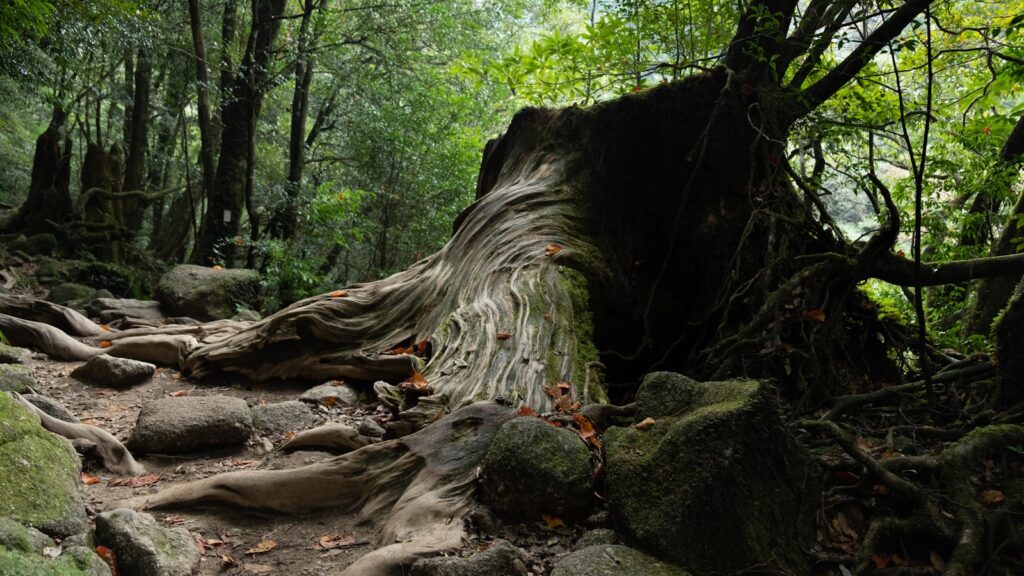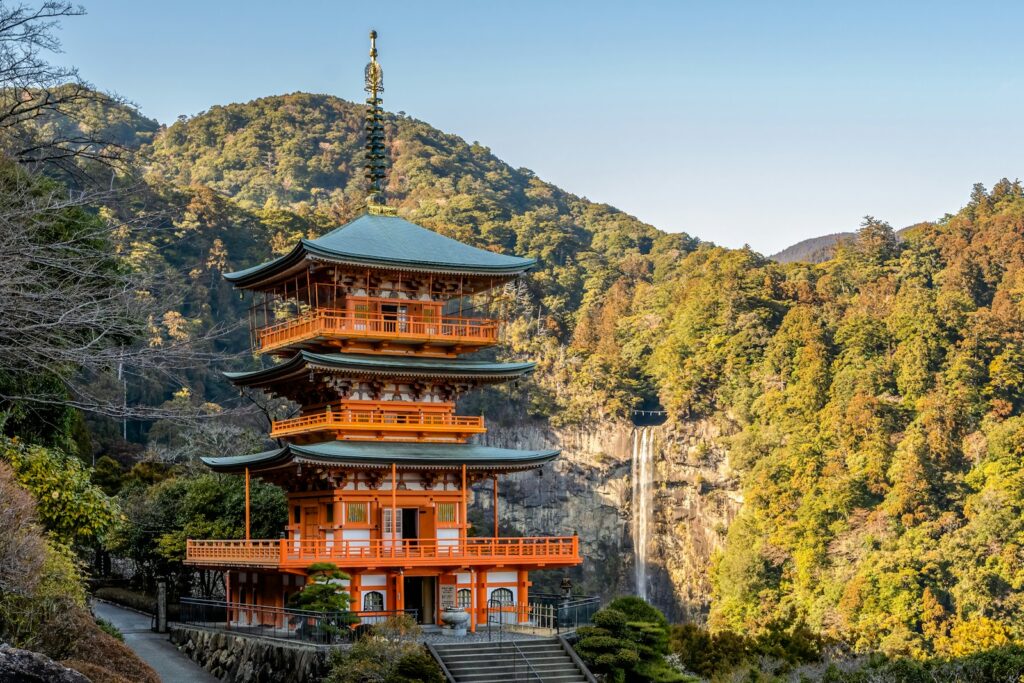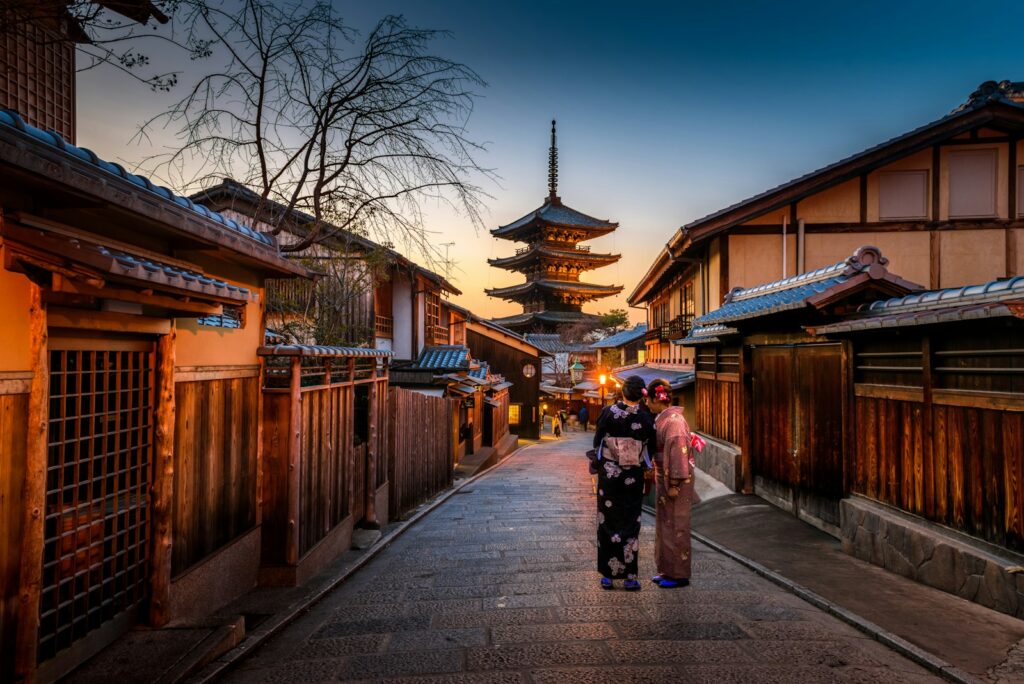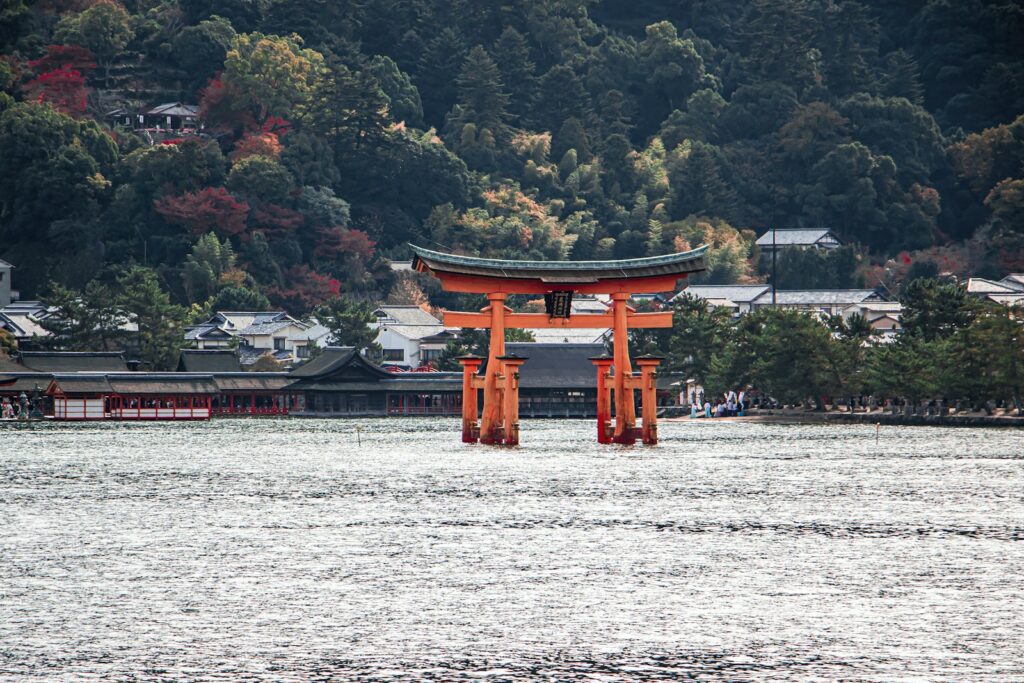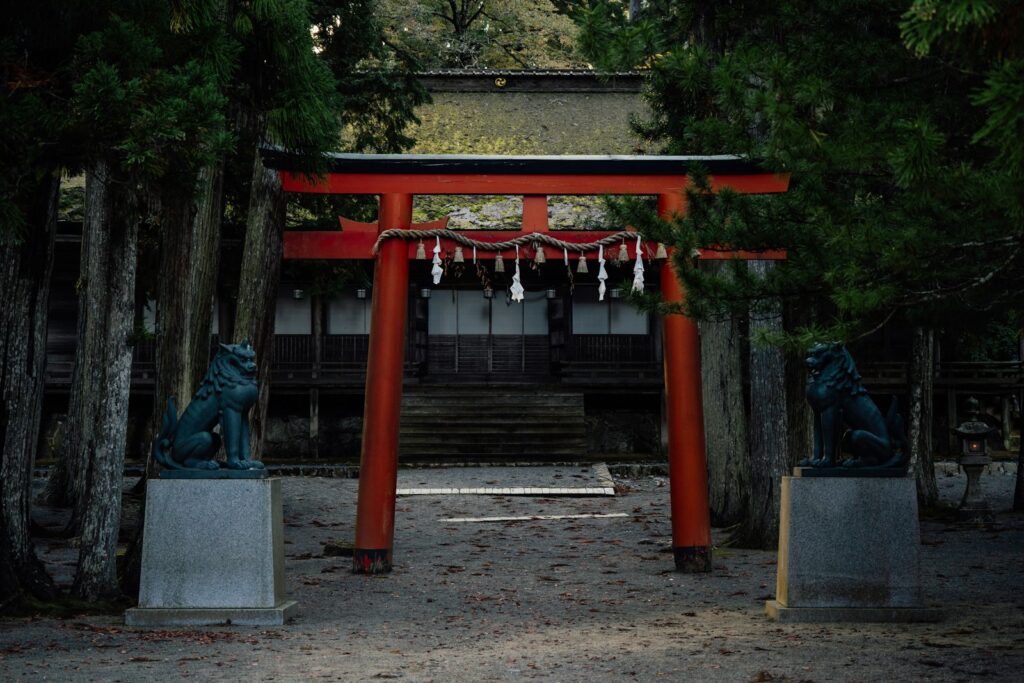UNESCO World Heritage Sites are landmarks or areas recognized by the United Nations Educational, Scientific and Cultural Organization (UNESCO) for their cultural, historical, scientific, or other forms of significance. These sites are protected by international treaties and are considered of outstanding value to humanity. There are three types of UNESCO World Heritage Sites:
- Cultural Sites: Monuments, buildings, and locations with historical, artistic, or cultural significance.
- Natural Sites: Natural areas with remarkable physical, biological, or geological formations, habitats of endangered species, or locations with significant natural beauty.
- Mixed Sites: Sites that have both cultural and natural significance.
As of 2024, Japan boasts an impressive 25 World Heritage Sites, comprising a mix of cultural, natural, and mixed properties. This blog on the 25 Japan UNESCO World Heritage Sites will not only introduce you to these exceptional sites but also provide practical sample itineraries to help you plan your journey and make the most out of your visit to these incredible landmarks. Whether you are drawn to ancient temples, stunning natural landscapes, or places where culture and nature intertwine, Japan’s World Heritage Sites offer something for every kind of explorer.
Cultural Heritage Sites in Japan
Jomon Prehistoric Sites (Hokkaido, Aomori, Iwate, and Akita)
The Jomon Prehistoric Sites were added to the UNESCO World Heritage list in 2021. This collection of 17 locations provides invaluable insights into the Jomon period, a prehistoric era that spans from 14,000 BCE to 300 BCE. These Japan UNESCO World Heritage Sites highlight the early development of Japanese culture and society, showcasing their unique spiritual and communal practices.
- Sannai-Maruyama Site (Aomori): This site is one of the largest and best-preserved Jomon settlements in Japan. Visitors can explore the remains of large pit dwellings, longhouses, and storage pits. The reconstructed village and museum exhibit artifacts such as pottery, stone tools, and clay figurines, offering a comprehensive view of Jomon life and society.
- Oyu Kanjo Resseki (Akita): Known for its impressive stone circles, this site provides evidence of ceremonial and communal activities during the Jomon period. The arrangement of the stones, which are believed to have been used for rituals, reflects the sophisticated social structures and spiritual beliefs of the Jomon people. The site includes a visitor center with detailed information and artifacts.
The Architectural Work of Le Corbusier: An Outstanding Contribution to the Modern Movement
In 2016, the National Museum of Western Art in Tokyo was inscribed as a UNESCO World Heritage Site as part of “The Architectural Work of Le Corbusier, an Outstanding Contribution to the Modern Movement.” This designation recognizes a series of seventeen buildings across seven countries, all designed by the influential Swiss-French architect Le Corbusier. These structures collectively exemplify the innovative spirit and principles of modern architecture.
The National Museum of Western Art, located in Ueno Park, Tokyo, is the only building in Japan designed by Le Corbusier. Completed in 1959, the museum stands as a testament to Le Corbusier’s vision of architecture as a harmonious blend of form, function, and humanism. The building’s design is characterized by its modular proportions, open floor plan, and the use of raw concrete, known as “béton brut.” These elements are hallmark features of the Brutalist architectural style, which Le Corbusier pioneered.
The museum’s layout follows Le Corbusier’s “museum of unlimited growth” concept, where the building can be expanded horizontally in a modular fashion without disrupting its overall harmony. This idea is evident in the spiral ramp at the heart of the museum, guiding visitors through a seamless and continuous flow of gallery spaces.
Le Corbusier’s work on the National Museum of Western Art not only brought modernist architecture to Japan but also influenced a generation of Japanese architects. The building symbolizes a cross-cultural exchange of ideas and a shared appreciation for modernist principles. Its inclusion in the UNESCO World Heritage list underscores its global significance and enduring impact on the field of architecture.
The museum houses an extensive collection of Western artworks, including pieces by Rodin, Monet, and Van Gogh, providing visitors with an enriching cultural experience. The integration of art and architecture within the museum space reflects Le Corbusier’s belief in the transformative power of both disciplines to enhance human experience and foster a deeper connection with the environment.
Hiraizumi – Temples, Gardens and Archaeological Sites Representing the Buddhist Pure Land
Hiraizumi, inscribed as a UNESCO World Heritage Site in 2011, is a remarkable cultural and spiritual landmark in Japan. Located in Iwate Prefecture, Hiraizumi is home to a collection of temples, gardens, and archaeological sites that embody the concept of the Buddhist Pure Land. This site provides a profound insight into the historical and religious context of Japan during the late Heian period (794-1185).
Hiraizumi flourished in the 11th and 12th centuries as the political and cultural center of the northern Tohoku region under the rule of the powerful Fujiwara clan. The Fujiwaras sought to create an earthly paradise based on the teachings of Pure Land Buddhism, which emphasizes the belief in rebirth in the Pure Land, a realm of celestial bliss. This religious philosophy deeply influenced the design and layout of the temples and gardens in Hiraizumi.
Key Sites
- Chuson-ji Temple: Founded in 850, Chuson-ji is the most iconic temple in Hiraizumi. Its Golden Hall (Konjikido), completed in 1124, is a masterpiece adorned with gold leaf and mother-of-pearl inlays. The hall enshrines statues of Amida Nyorai (the Buddha of Infinite Light) and other deities, reflecting the Pure Land belief. The surrounding grounds feature a series of ancient pagodas and the remains of over 40 temple structures.
- Motsu-ji Temple: Known for its exquisite garden, Motsu-ji epitomizes the Pure Land garden design, intended to represent the Buddhist paradise on earth. The garden’s central feature is a large pond with meticulously arranged rocks and islands, symbolizing the Pure Land’s tranquil waters and mountainous scenery. The temple was a major cultural and religious hub during its peak.
- Kanjizaio-in and Muryoko-in Temples: These temples are significant archaeological sites that further illustrate the Pure Land concept. Though only ruins remain, the layout of these temples and their gardens continue to convey the spiritual and aesthetic principles of the era.
- Takkoku no Iwaya: A unique site featuring a temple built into a cave. It houses a statue of Bishamonten (Vaisravana), the guardian deity, and is associated with the introduction of Buddhism to the Tohoku region. The natural integration of the temple into its rocky surroundings enhances its serene and mystical atmosphere.
Cultural and Spiritual Significance
The temples and gardens of Hiraizumi are not just historical relics; they are living embodiments of the Pure Land Buddhist ideals. The architectural and landscape designs were meticulously planned to create a space conducive to meditation, reflection, and spiritual enlightenment. The alignment of buildings, the flow of water, and the placement of natural elements were all intended to reflect the harmony and balance of the Pure Land.
Sites of Japan’s Meiji Industrial Revolution: Iron and Steel, Shipbuilding and Coal Mining
The Sites of Japan’s Meiji Industrial Revolution: Iron and Steel, Shipbuilding and Coal Mining were inscribed as a UNESCO World Heritage Site in 2015. This collection of twenty-three sites across eight prefectures showcases Japan’s rapid transformation from a feudal society into a major industrial nation during the Meiji period (1868-1912).
These sites represent the pivotal period in Japanese history when the country embraced industrialization to compete with Western powers. The Meiji government implemented extensive modernization programs, investing heavily in technology and infrastructure to foster industrial growth. This era saw the birth of Japan’s heavy industries, which played a crucial role in the nation’s economic development and emergence as a global power.
Key Sites
- Hagi: Located in Yamaguchi Prefecture, Hagi is known for its reverence to the revolution’s roots. The Shokasonjuku Academy, where many future Meiji leaders were educated, is situated here. This site illustrates the intellectual foundation of Japan’s modernization efforts.
- Nagasaki Shipyard: Established in 1857, this shipyard was Japan’s first modern naval facility. The dry docks and western-style buildings highlight the integration of Western engineering techniques and their adaptation to Japanese needs.
- Miike Coal Mine: Situated in Fukuoka and Kumamoto Prefectures, the Miike Coal Mine was one of the largest and most advanced coal mines in Asia. The site includes the Miike Port, which facilitated the export of coal, essential for fueling Japan’s industrial activities.
- Kamaishi Iron and Steel Works: In Iwate Prefecture, Kamaishi represents the pioneering efforts in Japan’s steel production. The blast furnace established here in 1857 is a testament to the technical advancements and the local adaptation of Western metallurgical techniques.
- Hashima Island (Gunkanjima): Known as “Battleship Island” due to its appearance, Hashima Island is an abandoned coal mining facility. The island’s stark, concrete structures are a haunting reminder of the intense industrial activity that once took place there. It symbolizes the peak of coal mining and the harsh living conditions endured by workers.
Tomioka Silk Mill and Related Sites (Gunma)
The Tomioka Silk Mill and Related Sites were designated as a UNESCO World Heritage Site in 2014. This site marks Japan’s transition into the modern industrial age, highlighting the country’s early adoption of Western industrial techniques.
- Tomioka Silk Mill: As Japan’s first modern silk reeling factory, established in 1872, the mill is an impressive example of industrial heritage. Visitors can tour the factory buildings, see the original machinery, and learn about the significant role the mill played in Japan’s economic development and modernization. The site also includes worker dormitories and related facilities, providing a comprehensive view of the social impact of industrialization.
Historic Villages of Shirakawa-go and Gokayama (Gifu and Toyama)
The Historic Villages of Shirakawa-go and Gokayama were added to the UNESCO World Heritage list in 1995. These villages are renowned for their unique gassho-zukuri farmhouses, which are a testament to the region’s adaptation to its harsh winter climate.
- Shirakawa-go: Known for its steep thatched-roof houses designed to withstand heavy snowfall, the village offers a picturesque landscape and a glimpse into traditional rural life. Walking through the village, visitors can enter some of the historic houses, which now serve as museums showcasing traditional tools, clothing, and ways of life. The Wada House, one of the largest gassho-zukuri houses, provides an authentic look at the region’s architectural ingenuity.
- Gokayama: Similar in architectural style to Shirakawa-go, Gokayama’s farmhouses are a testament to human ingenuity and resilience. The village is less touristy, offering a more serene and authentic experience of Japan’s rural heritage. Visitors can learn about the traditional methods of silk farming and paper making, which have been preserved for generations.
Mount Fuji (Yamanashi and Shizuoka)
Mount Fuji was inscribed as a UNESCO World Heritage Site in 2013. Japan’s highest peak, at 3,776 meters, is an iconic symbol revered in Japanese culture and a designated pilgrimage site. Recognized as both a natural and cultural heritage site, Mount Fuji embodies Japan’s spiritual traditions and artistic inspiration.
- Cultural Significance: For centuries, Mount Fuji has been a pilgrimage site, with numerous shrines and historical sites along its slopes. Climbing Mount Fuji is seen as a spiritual journey, and many pilgrims still follow the traditional routes to the summit. Key sites include the Fujisan Hongu Sengen Taisha Shrine and the Taisekiji Temple, which highlight the mountain’s religious significance.
- Natural Beauty: The mountain and its surrounding areas offer hiking, scenic views, and cultural landmarks. The Fuji Five Lakes region, located at the northern base, provides stunning views of the mountain, recreational activities, and a range of accommodations. The area’s natural beauty, combined with its cultural importance, makes Mount Fuji a must-visit destination.
Historic Monuments of Ancient Kyoto (Kyoto, Uji, and Otsu)
The Historic Monuments of Ancient Kyoto were inscribed on the UNESCO World Heritage list in 1994. Kyoto, the former capital of Japan, is home to numerous historic sites that reflect its cultural and historical importance. These Japan UNESCO World Heritage Sites encompass 17 locations, each with its unique significance, illustrating the development of Japanese architecture, art, and culture over more than a millennium.
- Kinkaku-ji (Golden Pavilion): This Zen Buddhist temple, covered in gold leaf and surrounded by beautiful gardens and a reflective pond, was originally built in 1397. The stunning architecture and serene environment make it one of Kyoto’s most visited sites. The temple’s upper floors are covered in gold leaf, creating a dazzling reflection in the pond.
- Ginkaku-ji (Silver Pavilion): Known for its refined simplicity and stunning gardens, Ginkaku-ji offers a peaceful retreat and a glimpse into the aesthetics of Japanese culture. Built in 1482, the temple was originally intended to be covered in silver leaf, but this plan was never completed, adding to its unique charm.
- Kiyomizu-dera Temple: Famous for its wooden stage that juts out from the main hall, offering breathtaking views of Kyoto. The temple, founded in 778, is known for its unique construction and the surrounding cherry blossom trees, making it a popular spot for visitors. The temple complex includes several other significant buildings, such as the Jishu Shrine, dedicated to the god of love.
Historic Monuments of Ancient Nara (Nara)
The Historic Monuments of Ancient Nara were inscribed as UNESCO World Heritage Sites in 1998. Nara, Japan’s first permanent capital, is rich in historic sites that illustrate its early cultural development. These Japan UNESCO World Heritage Sites include temples, shrines, and natural sites, reflecting the city’s historical and spiritual significance.
- Todai-ji Temple: Home to the world’s largest bronze statue of the Buddha, this temple is a significant religious and cultural landmark. Built in 752, the Great Buddha Hall (Daibutsuden) is one of the largest wooden buildings in the world. The sheer size of the statue and the intricate details of the hall are awe-inspiring.
- Kasuga Taisha Shrine: Renowned for its many bronze and stone lanterns, this shrine, established in 768, is deeply intertwined with Nara’s history. The lanterns, donated by worshippers, create a mystical atmosphere, especially during the lantern festivals. The shrine’s beautiful vermilion buildings and surrounding deer park add to its charm.
- Nara Park: Famous for its freely roaming deer, considered messengers of the gods. Visitors can feed and interact with the deer, adding a unique and charming element to their visit. The park also includes other important cultural sites, such as Kofuku-ji Temple, enhancing the overall experience.
Himeji Castle (Hyogo)
Himeji Castle, also known as the “White Heron Castle,” was inscribed on the UNESCO World Heritage list in 1993. It is Japan’s most spectacular castle, celebrated for its elegant design and historical significance. These Japan UNESCO World Heritage Sites represent the pinnacle of Japanese castle architecture, offering a well-preserved glimpse into Japan’s feudal past.
- Himeji Castle: Often considered Japan’s most beautiful castle for its imposing size and graceful lines, it has survived intact through centuries of wars and natural disasters. The castle’s complex defensive design, with its labyrinthine approach, strategic fortifications, and numerous defensive mechanisms, is a marvel of feudal Japanese architecture. Visitors can explore the main keep, its interior floors, and the surrounding gardens, gaining insight into the life of samurai and feudal lords.
Hiroshima Peace Memorial (Genbaku Dome)
The Hiroshima Peace Memorial, commonly known as the Genbaku Dome, was designated as a UNESCO World Heritage Site in 1996. Located in Hiroshima Prefecture, this poignant landmark serves as a powerful reminder of the devastating impacts of nuclear warfare and a symbol of peace and resilience.
On August 6, 1945, during the final stages of World War II, Hiroshima became the first city in history to be targeted by an atomic bomb. The explosion obliterated much of the city and resulted in the deaths of tens of thousands of people. Amidst the widespread destruction, one structure remarkably remained standing near the bomb’s hypocenter: the Hiroshima Prefectural Industrial Promotion Hall. This building, now known as the Genbaku Dome, was designed by Czech architect Jan Letzel and completed in 1915. Originally intended for exhibitions and trade fairs, it now stands as a solemn testament to the horrors of nuclear war.
The Genbaku Dome holds immense historical, cultural, and symbolic significance. As one of the few structures left partially intact after the bombing, it provides a stark visual contrast to the modern city that has since emerged around it. The ruins of the Dome, with its skeletal frame and charred remains, evoke the immediate aftermath of the atomic blast and the subsequent suffering and resilience of the Hiroshima community.
In the years following the bombing, there were debates about whether to preserve the remains of the Genbaku Dome. Survivors and citizens of Hiroshima ultimately decided to maintain the site as a memorial, advocating for peace and the abolition of nuclear weapons. In 1966, the Hiroshima City Council formally decided to preserve the Genbaku Dome indefinitely.
Today, the Genbaku Dome is a central feature of the Hiroshima Peace Memorial Park, which includes various monuments, museums, and memorials dedicated to those who perished and the survivors, known as Hibakusha. The park also hosts the annual Hiroshima Peace Memorial Ceremony on August 6, drawing attendees from around the world to commemorate the victims and reaffirm commitments to global peace.
Mozu-Furuichi Kofun Group: Mounded Tombs of Ancient Japan
The Mozu-Furuichi Kofun Group, inscribed as a UNESCO World Heritage Site in 2019, is a remarkable archaeological complex in the Osaka Prefecture that offers a window into Japan’s ancient history. These mounded tombs, dating back to the late 4th to 6th centuries, represent the burial practices of the Kofun period and reflect the socio-political landscape of early Japan.
The Kofun period (circa 3rd to 7th century) is named after the distinctive kofun, or burial mounds, constructed for members of the ruling elite. These tombs are characterized by their large size and varied shapes, including keyhole, circular, and square mounds. The Mozu-Furuichi Kofun Group consists of 49 kofun in two clusters: Mozu in Sakai City and Furuichi in Habikino and Fujiidera Cities. These mounds were built for emperors, empresses, and other high-ranking individuals, indicating their significant status and the centralized power of the Yamato state.
Key Features
- Daisenryo Kofun (Nintoku-ryo Kofun): The largest and most famous kofun in the Mozu cluster, Daisenryo Kofun is believed to be the tomb of Emperor Nintoku. This keyhole-shaped mound is one of the largest tombs in the world, spanning approximately 486 meters in length and 36 meters in height. It is surrounded by three moats, highlighting its grandeur and the advanced engineering skills of the time.
- Furuichi Cluster: The Furuichi cluster contains numerous significant kofun, including the Ojin Tenno-ryo Kofun, attributed to Emperor Ojin. These mounds vary in size and shape, offering insights into the diverse burial practices and the hierarchical nature of the Kofun period society.
- Haniwa Figures: Many of the kofun were adorned with haniwa, clay figurines that were placed on the mounds and served both decorative and ritualistic purposes. These figures, shaped as humans, animals, and objects, provide valuable information about the daily life, beliefs, and customs of the people during the Kofun period.
The Mozu-Furuichi Kofun Group is a testament to the cultural and political developments of ancient Japan. These tombs illustrate the emergence of a unified state under powerful leaders who were able to mobilize vast resources and labor for their construction. The size and complexity of the kofun reflect the hierarchical society and the reverence for the deceased, believed to continue their influence in the afterlife.
The kofun also demonstrate the connections between Japan and other cultures. The construction techniques and grave goods found within the tombs show influences from the Korean Peninsula and China, indicating a period of significant cultural exchange and interaction.
Buddhist Monuments in the Horyu-ji Area (Nara)
The Buddhist Monuments in the Horyu-ji Area were added to the UNESCO World Heritage list in 1993. Horyu-ji Temple, constructed in 607 AD, is one of the world’s oldest wooden structures. These Japan UNESCO World Heritage Sites showcase early Buddhist architecture and the spread of Buddhism in Japan.
Visitors can explore the temple complex, which includes the main hall (Kondo), the five-story pagoda, and several other buildings that date back over a millennium. The intricate carvings and ancient wooden structures provide a fascinating look into early Japanese religious architecture. The temple’s collection of Buddhist statues, artifacts, and the world’s oldest surviving wooden pagoda make it a must-visit for history and architecture enthusiasts.
Itsukushima Shrine (Hiroshima)
Itsukushima Shrine, located on Miyajima Island, was inscribed as a UNESCO World Heritage Site in 1996. The shrine is famous for its “floating” torii gate, which appears to float on the water during high tide. These Japan UNESCO World Heritage Sites are notable for their spiritual significance and scenic beauty, offering a unique cultural experience.
The shrine is built over the water, and during high tide, it appears to float, creating a stunning visual effect. The torii gate, one of Japan’s most photographed landmarks, is a symbol of the island’s sacred status. Visitors can explore the shrine complex, enjoy traditional performances, and take in the beautiful views of the Seto Inland Sea. The island itself offers hiking trails, historical sites, and the opportunity to experience traditional Japanese culture.
Iwami Ginzan Silver Mine (Shimane)
The Iwami Ginzan Silver Mine was designated as a UNESCO World Heritage Site in 2007. Operating for nearly 400 years, the mine played a crucial role in Japan’s economic history. These Japan UNESCO World Heritage Sites offer a fascinating glimpse into the past, highlighting the significance of silver mining in the development of Japan’s economy and trade.
Visitors can explore the mine shafts and tunnels, visit the old mining town of Omori, and see the remnants of refining facilities. The site also includes temples, shrines, and historic houses that were built during the mine’s peak operation. The surrounding area offers beautiful hiking trails and scenic views, providing a comprehensive look at the region’s silver mining heritage.
Gusuku Sites and Related Properties of the Kingdom of Ryukyu (Okinawa)
The Gusuku Sites and Related Properties of the Kingdom of Ryukyu were added to the UNESCO World Heritage list in 2000. These sites highlight the unique culture of the Ryukyu Kingdom, including Shuri Castle and other gusuku (fortresses). These Japan UNESCO World Heritage Sites are essential for understanding the distinct historical and cultural identity of Okinawa.
Once the royal palace of the Ryukyu Kingdom, Shuri Castle is a symbol of Okinawa’s rich cultural heritage. The castle’s unique architectural style, influenced by both Japanese and Chinese elements, and its strategic location provide insights into the history and culture of the Ryukyu Kingdom. The castle complex includes several buildings, gates, and gardens, offering a comprehensive view of Ryukyu’s royal past.
Hidden Christian Sites in the Nagasaki Region (Nagasaki)
The Hidden Christian Sites in the Nagasaki Region were inscribed as UNESCO World Heritage Sites in 2018. These locations tell the story of Japan’s hidden Christians, who maintained their faith in secret during periods of persecution. These Japan UNESCO World Heritage Sites offer a poignant insight into the resilience and faith of these communities.
Built in 1864 by French missionaries, Oura Church is one of the oldest Christian churches in Japan. It stands as a testament to the perseverance of the hidden Christians. The church’s Gothic architecture and serene atmosphere make it a significant cultural and historical site.
Japan’s hidden Chistian villages, often located in remote and inaccessible areas, reveal how communities managed to preserve their faith and traditions in secret. Visiting these sites provides a moving experience and a deeper understanding of this unique aspect of Japanese history. The Sakitsu Village in Amakusa and the Egami Village on Hirado Island are notable examples, with preserved churches and homes that tell the story of these resilient communities.
The Sacred Island of Okinoshima and Associated Sites in the Munakata Region
The Sacred Island of Okinoshima and Associated Sites in the Munakata Region, inscribed as a UNESCO World Heritage Site in 2017, are a testament to the profound spiritual heritage of Japan. Located off the coast of Kyushu in Fukuoka Prefecture, this site includes the island of Okinoshima, the three Munakata Taisha shrines, and several ancient tombs. Together, these locations illustrate the ancient religious practices and cultural significance of this area.
Okinoshima has been a sacred site of worship since the 4th century. The island served as a pivotal place for rituals conducted to pray for safe maritime journeys, particularly during the periods of active trade and diplomatic missions between Japan, the Korean Peninsula, and China. The island is considered so sacred that, traditionally, women are forbidden to set foot on it, and men must perform purification rituals before landing.
The religious significance of Okinoshima is deeply intertwined with the Munakata Taisha, a group of three Shinto shrines: Hetsu-gu on the mainland, Nakatsu-gu on the island of Oshima, and Okitsu-gu on Okinoshima itself. These shrines are dedicated to the three Munakata goddesses, who are believed to protect seafarers and ensure safe navigation.
Key Features
- Okinoshima Island: Often referred to as a “shrine island,” Okinoshima is home to Okitsu-gu, the shrine dedicated to the goddess Tagori-hime. The island’s pristine condition and the numerous archaeological finds, including religious artifacts, mirrors, and beads, reflect its long history as a sacred site. Over 80,000 artifacts have been discovered, many of which are designated as national treasures.
- Munakata Taisha: The Munakata Taisha shrine complex is integral to the worship practices associated with Okinoshima. Hetsu-gu, located on the mainland, serves as the head shrine and is accessible to the public. Nakatsu-gu, situated on Oshima island, and Okitsu-gu, on Okinoshima, complete the triad of shrines, each playing a crucial role in the maritime rituals.
- Associated Ancient Tombs: The region also includes significant ancient tombs, such as the Shimbaru-Nuyama Mounded Tomb Group. These kofun (burial mounds) provide insight into the funerary practices and the sociopolitical structure of the time.
The Sacred Island of Okinoshima and the Munakata region’s sites are emblematic of the syncretism between nature worship and Shinto beliefs. The rituals performed on Okinoshima were intended to appease the kami (spirits) and ensure the protection and prosperity of those undertaking perilous sea voyages. The island’s continued sacredness is evident in the strict regulations governing access and conduct, preserving its spiritual integrity.
The archaeological discoveries on Okinoshima reveal the island’s historical role as a spiritual center and its connections with continental Asia. The artifacts, many of which were ritual offerings, underscore the cultural exchanges and the importance of Okinoshima as a maritime hub in ancient times.
Shrines and Temples of Nikko
The Shrines and Temples of Nikko, inscribed as a UNESCO World Heritage Site in 1999, are a stunning ensemble of religious architecture nestled in the mountains of Tochigi Prefecture, Japan. This site includes 103 historic buildings and structures within two Shinto shrines (Nikko Toshogu and Futarasan-jinja) and one Buddhist temple (Rinno-ji), along with the surrounding natural environment. Together, they form a sacred landscape that has been a center of spiritual and cultural significance for centuries.
Nikko has been a sacred site for Shinto and Buddhist worship since the 8th century. It gained prominence in the early 17th century when Tokugawa Ieyasu, the founder of the Tokugawa shogunate, was enshrined at Nikko Toshogu Shrine. This act elevated the area’s status, making it a pilgrimage site and a symbol of the shogunate’s power and spiritual authority.
Key Features
- Nikko Toshogu Shrine: The most famous of Nikko’s religious sites, Toshogu is dedicated to Tokugawa Ieyasu. The shrine complex is renowned for its elaborate architecture and richly decorated buildings. The Yomeimon Gate, often referred to as the “Gate of Sunlight,” is particularly notable for its intricate carvings and vibrant colors. The Five-Story Pagoda and the Sleeping Cat (Nemuri-neko) carving are also iconic elements of the shrine.
- Futarasan-jinja Shrine: Established in 767 by the Buddhist monk Shodo Shonin, Futarasan-jinja is dedicated to the deities of three sacred mountains: Mount Nantai, Mount Nyoho, and Mount Taro. The shrine’s buildings are more understated compared to Toshogu, reflecting a harmonious blend with the natural surroundings. The sacred bridge, Shinkyo, spanning the Daiya River, is a revered structure associated with the shrine.
- Rinno-ji Temple: Founded by Shodo Shonin in the 8th century, Rinno-ji is the center of Buddhist worship in Nikko. The temple complex includes the Sanbutsudo, which houses large gilded statues of Amida, Senju-Kannon (Kannon with a thousand arms), and Bato-Kannon (Kannon with a horse’s head). The Shoyo-en Garden within the temple grounds is a beautiful example of a traditional Japanese landscape garden.
The Shrines and Temples of Nikko exemplify the syncretism of Shinto and Buddhist religious practices in Japan. The architectural grandeur of Nikko Toshogu, with its lavish decorations and detailed carvings, showcases the artistic and cultural achievements of the Edo period. In contrast, the more subdued elegance of Futarasan-jinja and Rinno-ji highlights a deep reverence for nature and spiritual simplicity.
Nikko’s religious sites also play a crucial role in the rituals and ceremonies that continue to be practiced today. The annual Grand Festival of Nikko Toshogu, which includes traditional processions and martial arts performances, attracts numerous visitors and maintains the cultural traditions associated with the Tokugawa shogunate.
Natural Heritage Sites in Japan
Shiretoko
A pristine natural area known for its diverse ecosystems and wildlife. This Japan UNESCO World Heritage Site is a haven for nature lovers and wildlife enthusiasts. The peninsula is home to an array of flora and fauna, including brown bears, foxes, and a variety of marine life. Visitors can explore the untouched wilderness through hiking trails, boat tours, and even winter activities like ice walking. Shiretoko’s dramatic landscapes, from dense forests to rugged coastlines, provide a stunning backdrop for observing nature in its purest form.
Shirakami-Sanchi (Aomori and Akita)
One of the last virgin beech forests in Japan. This Japan UNESCO World Heritage Site spans over 130,000 hectares and is a critical habitat for numerous species, including the rare black woodpecker and the Japanese serow. The forest’s untouched beauty offers a glimpse into Japan’s ancient natural heritage. Visitors can hike through the lush greenery, discovering waterfalls, streams, and a rich diversity of plant life. Shirakami-Sanchi is not just a sanctuary for wildlife but also a place of serene beauty and tranquility.
Yakushima (Kagoshima)
An island with ancient cedar forests and rich biodiversity. Yakushima, a Japan UNESCO World Heritage Site, is famous for its ancient Yaku-sugi cedar trees, some of which are over 1,000 years old. The island’s unique climate, with heavy rainfall, supports a lush, green environment that feels almost otherworldly. Hiking trails lead through mystical forests, up mountains, and along rivers, offering a chance to encounter diverse wildlife such as deer and monkeys. Yakushima’s natural wonders provide a perfect blend of adventure and serenity.
Ogasawara Islands
A remote archipelago with unique ecosystems and endemic species. Known as the “Galápagos of the Orient,” this Japan UNESCO World Heritage Site comprises over 30 islands located 1,000 kilometers south of Tokyo. The Ogasawara Islands are home to many species that cannot be found anywhere else in the world. The clear blue waters surrounding the islands are ideal for snorkeling, diving, and whale watching, while the lush landscapes on land offer hiking opportunities with stunning ocean views. The isolation of the Ogasawara Islands has preserved their natural beauty and biodiversity, making them a must-visit for those seeking unspoiled nature.
Amami-Oshima Island, Tokunoshima Island, Northern Part of Okinawa Island, and Iriomote Island
In 2021, the UNESCO World Heritage designation was awarded to Amami-Oshima Island, Tokunoshima Island, the northern part of Okinawa Island, and Iriomote Island, recognizing their exceptional biodiversity and unique ecosystems. Located in the Ryukyu Archipelago, these islands are celebrated for their rich natural habitats that host a plethora of endemic species, many of which are critically endangered.
These islands form a part of the Nansei Islands, stretching from Kyushu to Taiwan, and are known for their subtropical rainforests, mangrove swamps, and coral reefs. Their isolation and varied topography have given rise to diverse ecosystems, making them a critical area for biodiversity in East Asia.
- Amami-Oshima Island: The largest island in the group, Amami-Oshima, is characterized by dense, subtropical forests. It is home to several rare species, including the Amami rabbit (Pentalagus furnessi) and the Lidth’s jay (Garrulus lidthi). The island’s varied habitats, from mountain forests to coastal mangroves, support a wide array of flora and fauna.
- Tokunoshima Island: Known for its rugged terrain and extensive forests, Tokunoshima is a sanctuary for endangered species such as the Tokunoshima spiny rat (Tokudaia tokunoshimensis) and the Amami jay (Garrulus lidthi). Conservation efforts focus on protecting these species and their habitats from threats like invasive species and habitat destruction.
- Northern Part of Okinawa Island: This region, often referred to as Yanbaru, is renowned for its ancient, dense forests that harbor unique wildlife, including the Okinawa rail (Gallirallus okinawae) and the Okinawa woodpecker (Dendrocopos noguchii). The forests of Yanbaru are considered among the most pristine in Japan and are vital for the survival of these endemic species.
- Iriomote Island: The second largest island in the Okinawa Prefecture, Iriomote is famous for its untouched mangrove forests and river systems. The Iriomote cat (Prionailurus bengalensis iriomotensis), a critically endangered wildcat subspecies, is a notable inhabitant of the island. Iriomote’s rich marine biodiversity, including coral reefs and seagrass beds, also contributes to its ecological importance.
Mixed Heritage Sites in Japan
Sacred Sites and Pilgrimage Routes in the Kii Mountain Range (Wakayama, Nara, and Mie)
This Japan UNESCO World Heritage Site is a profound testament to the spiritual and natural heritage of Japan. The site includes three sacred locations: Yoshino and Omine, Kumano Sanzan, and Koyasan, all interconnected by ancient pilgrimage routes that traverse the beautiful Kii Mountains.
- Yoshino and Omine: Known for their stunning cherry blossoms in spring, Yoshino and Omine are revered as sacred mountains. Yoshino has been a center of mountain worship for centuries and offers breathtaking views of lush forests and valleys. Pilgrims and visitors can explore numerous temples and shrines nestled in this serene environment, experiencing a deep sense of tranquility and reverence.
- Kumano Sanzan: This refers to the three grand shrines of Kumano—Kumano Hongu Taisha, Kumano Nachi Taisha, and Kumano Hayatama Taisha. These shrines are central to the Kumano Kodo pilgrimage routes, which have been walked for over a thousand years. The routes pass through dense forests, along rivers, and over mountain ridges, embodying the harmonious coexistence of nature and spirituality. The area’s waterfalls, especially the Nachi Falls, add to the majestic natural beauty.
- Koyasan: As the headquarters of the Shingon Buddhist sect, Koyasan is a significant religious site founded by the monk Kobo Daishi in the 9th century. The area is known for its temple complex, including Kongobu-ji Temple and Okunoin Cemetery, where Kobo Daishi’s mausoleum is located. Koyasan is surrounded by dense cedar forests and serene mountains, providing a tranquil setting for meditation and reflection.
The Sacred Sites and Pilgrimage Routes in the Kii Mountain Range offer a unique blend of cultural and natural significance. The pilgrimage routes not only connect these sacred sites but also traverse some of Japan’s most beautiful and diverse landscapes. Visitors can immerse themselves in the spiritual heritage of Japan while enjoying the region’s natural splendor, making this a truly enriching and unforgettable experience.
Sample Itineraries for Visiting Japan’s World Heritage Sites
Itinerary 1: Cultural Treasures of Kyoto and Nara (3 Days)
Day 1: Kyoto
Begin your journey at Kyoto Station. From here, take the Karasuma Line to Kitaoji Station, which takes about 10 minutes and costs 260 yen. Transfer to bus 101 or 205 to reach Kinkaku-ji, the famous Golden Pavilion, in another 10 minutes (230 yen). Kinkaku-ji is a UNESCO World Heritage Site renowned for its stunning gold leaf exterior and picturesque setting by a reflective pond. The entrance fee is 400 yen, and the temple is open from 9:00 AM to 5:00 PM. Spend approximately an hour soaking in the serene atmosphere.
Next, take bus 59 from Kinkaku-ji to Ryoan-ji, a short 10-minute ride costing 230 yen. Ryoan-ji, also a UNESCO World Heritage Site, is famous for its rock garden, providing a serene and contemplative experience. The temple grounds are expansive, featuring a beautiful pond and traditional buildings. The entrance fee is 500 yen, with opening hours from 8:00 AM to 5:00 PM (March to November) and 8:30 AM to 4:30 PM (December to February). Plan to spend about an hour here.
In the afternoon, head to Nijo Castle. From Ryoan-ji, take bus 50 or 55 to Nijo-jo-mae Station, a 20-minute journey costing 230 yen. Nijo Castle, a UNESCO World Heritage Site, is a splendid example of feudal-era architecture. The entrance fee is 1,030 yen, which includes access to the Ninomaru Palace. The castle is open from 8:45 AM to 5:00 PM, with the last entry at 4:00 PM. Spend around two hours exploring the intricate interiors of the palace and the sprawling gardens that change with the seasons.
In the evening, stroll through the Gion District to experience traditional Kyoto. From Nijo Castle, take the Karasuma Line from Nijo Station to Shijo Station, then walk to Gion, which takes about 30 minutes and costs 230 yen. Gion is Kyoto’s famous geisha district, where you can often see geiko (geisha) and maiko (apprentice geisha) walking to their evening appointments. Walk through Hanamikoji Street, visit Yasaka Shrine, and explore the picturesque streets lined with traditional teahouses and restaurants. Plan to spend about two hours enjoying the unique atmosphere of Gion.
Day 2: Kyoto
Start your morning with a visit to Fushimi Inari Shrine, famous for its thousands of red torii gates. From Kyoto Station, take the JR Nara Line to Inari Station, which is a 5-minute ride costing 150 yen. Fushimi Inari Shrine is open 24 hours, and entry is free. The hike to the summit takes about 2-3 hours round trip, offering beautiful views and smaller shrines along the way. Plan to spend your morning exploring the network of trails leading up to Mount Inari.
In the afternoon, explore Kiyomizu-dera Temple and enjoy panoramic views of the city. From Fushimi Inari, take the Keihan Line to Kiyomizu-Gojo Station, then walk or take a short bus ride to the temple, which takes about 30 minutes and costs 270 yen. Kiyomizu-dera is a UNESCO World Heritage Site perched on a hillside and offers stunning views of Kyoto, especially during cherry blossom and autumn foliage seasons. The temple is open from 6:00 AM to 6:00 PM, with an entrance fee of 400 yen. Spend approximately two hours here, appreciating the unique construction and the surrounding beauty.
For dinner, head to Pontocho Alley, known for its traditional dining. From Kiyomizu-dera, take a bus or taxi to Pontocho Alley, a 20-minute journey costing 230 yen by bus. Pontocho Alley is lined with many traditional restaurants offering kaiseki, yakitori, and other Japanese cuisines. The lantern-lit alleyway provides a charming and atmospheric dining experience. Plan to spend around two hours enjoying your evening meal in this delightful setting.
Day 3: Nara
On the final day, take a train to Nara. From Kyoto Station, take the JR Nara Line to Nara Station, which takes approximately 45 minutes and costs 720 yen one way. Upon arrival, head to Todai-ji Temple, home to the Great Buddha statue. Todai-ji is a UNESCO World Heritage Site and one of Japan’s most famous and historically significant temples, housing the world’s largest bronze statue of the Buddha (Daibutsu).
The Great Buddha Hall (Daibutsuden) is a colossal wooden structure that inspires awe and reverence. The entrance fee is 600 yen, and the temple is open from 8:00 AM to 5:00 PM (November to March) and 7:30 AM to 5:30 PM (April to October). Plan to spend about two hours exploring the temple and its surroundings.
In the afternoon, explore Kasuga Taisha Shrine and Nara Park. Kasuga Taisha, a UNESCO World Heritage Site, is renowned for its thousands of lanterns, donated by worshippers, which create a magical atmosphere. The shrine, dating back to 768 AD, has an entrance fee of 500 yen for the inner area and is open from 6:30 AM to 5:00 PM. Spend about 1.5 hours here, soaking in the spiritual ambiance.
Afterward, visit Nara Park, famous for its freely roaming deer, which are considered messengers of the gods. The park is free to enter and offers a unique and charming experience as visitors can buy special deer crackers (shika senbei) to feed the deer. Plan to spend about an hour enjoying the park.
In the evening, return to Kyoto or stay in Nara. To return to Kyoto, take the JR Nara Line back to Kyoto Station, a 45-minute ride costing 720 yen. This detailed itinerary provides a comprehensive and enjoyable exploration of Kyoto and Nara’s cultural treasures, ensuring a memorable trip with well-organized activities and transportation.
Itinerary 2: Natural Wonders of Yakushima and the Ogasawara Islands (3 Days)
Day 1: Yakushima
Begin your journey by flying from Kagoshima to Yakushima, a flight that takes approximately 40 minutes and costs around 15,000 yen one way. Upon arrival at Yakushima Airport, you can either rent a car or use local buses for transportation. Rental cars start at 5,000 yen per day, offering flexibility to explore the island at your own pace.
In the afternoon, visit Shiratani Unsuikyo Ravine, a lush, moss-covered forest that inspired the setting for the animated film “Princess Mononoke.” The entrance fee is 300 yen. This ravine is part of the larger Yakushima UNESCO World Heritage Site, recognized in 1993 for its unique ecosystems and ancient forests. Spend a few hours hiking through the mystical landscape, enjoying the serene beauty and spotting various flora and fauna. The hike to Taiko Iwa Rock offers stunning panoramic views and takes about 2-3 hours round trip.
After your hike, relax at your accommodation. Options include guesthouses or ryokans, which provide a traditional Japanese lodging experience. In the evening, unwind and prepare for the next day’s adventure.
Day 2: Yakushima
Start your morning early with a hike to Jomon Sugi, an ancient cedar tree estimated to be over 2,000 years old. This tree is one of the highlights of the Yakushima UNESCO World Heritage Site. The full-day hike is challenging, covering about 22 kilometers round trip and taking approximately 8-10 hours. Ensure you are well-prepared with proper hiking gear, plenty of water, and snacks. Guided tours are available and highly recommended for first-time visitors to navigate the trails safely.
Return to your accommodation in the evening and enjoy a relaxing soak in a local hot spring (onsen), a perfect way to soothe your muscles after a long hike. Onsen entry fees typically range from 500 to 1,000 yen. This experience adds a traditional Japanese touch to your visit, offering both relaxation and cultural immersion.
Day 3: Ogasawara Islands
Begin your day by boarding the ferry from Tokyo to Chichijima, the main island of the Ogasawara archipelago. The ferry ride takes approximately 24 hours and costs around 25,000 yen round trip. The Ogasawara Islands are a remote UNESCO World Heritage Site, designated in 2011 for their unique ecosystems and endemic species.
Arrive in Chichijima in the afternoon and explore the island’s main town, Omura. This small, charming town offers a glimpse into the local lifestyle and serves as a base for various activities. Visit the Ogasawara Marine Center to learn about the island’s marine life and conservation efforts. Take a leisurely walk around the town, enjoying the relaxed pace and beautiful coastal views.
In the evening, dine at a local restaurant where you can sample fresh seafood and other island specialties. Transportation on Chichijima includes local buses or rental scooters, which provide an easy and fun way to explore the island. Spend the night at a guesthouse, enjoying the hospitality and unique atmosphere of this remote island community.
Itinerary 3: Historical Journey in Hiroshima and Miyajima (3 Days)
Day 1: Hiroshima
Start your day in Hiroshima by visiting the Hiroshima Peace Memorial Park and Museum. The park, a UNESCO World Heritage Site, is a poignant reminder of the devastation caused by the atomic bomb in 1945 and serves as a symbol of peace. The museum’s entrance fee is 200 yen, and it is open from 8:30 AM to 6:00 PM (hours may vary by season). Spend about 2-3 hours exploring the exhibits, the Atomic Bomb Dome, and the various monuments dedicated to the victims.
In the afternoon, head to Hiroshima Castle, also known as Carp Castle. Although the original castle was destroyed during the bombing, it has been reconstructed and now serves as a museum of Hiroshima’s history before World War II. The entrance fee is 370 yen, and it is open from 9:00 AM to 5:00 PM. Spend around 1.5 hours here, then make your way to Shukkeien Garden, a beautiful Japanese garden dating back to 1620. The entrance fee is 260 yen, and it is open from 9:00 AM to 6:00 PM. Stroll through the serene landscapes, taking in the meticulously designed ponds and teahouses, and spend about 1-1.5 hours enjoying the garden.
In the evening, head to Okonomimura, a building dedicated to okonomiyaki, Hiroshima’s famous savory pancake. This multi-story building houses numerous okonomiyaki restaurants, offering a unique and delicious dining experience. Plan to spend about 1-2 hours enjoying dinner.
Hiroshima has an efficient tram system, and a day pass costs around 700 yen, allowing unlimited travel on the city’s trams. This is an economical and convenient way to get around Hiroshima.
Day 2: Miyajima
Begin your morning by taking a ferry to Miyajima Island. The ferry ride takes approximately 10 minutes and costs 180 yen one way. Miyajima is home to Itsukushima Shrine, a UNESCO World Heritage Site famous for its “floating” torii gate, which appears to float on the water during high tide. The shrine’s entrance fee is 300 yen, and it is open from 6:30 AM to 6:00 PM. Spend about 2 hours exploring the shrine and enjoying the picturesque views.
In the afternoon, hike or take the ropeway up Mount Misen, which offers panoramic views of the Seto Inland Sea and surrounding islands. The ropeway costs 1,800 yen for a round trip, and the hike to the summit takes about 1.5-2 hours one way. The mountaintop features several temples, observation points, and even wild deer, making it a rewarding journey. Allocate around 3-4 hours for this adventure.
After descending, take some time to explore the island’s charming streets, visit local shops, or relax by the waterfront before returning to Hiroshima. Ferries run frequently, making it easy to get back to the mainland.
Day 3: Iwami Ginzan Silver Mine
On your final day, take a train to Oda City to visit the Iwami Ginzan Silver Mine, a UNESCO World Heritage Site since 2007. The journey from Hiroshima to Oda City takes approximately 3 hours and costs around 5,500 yen one way by JR train. Upon arrival, use local buses or rent a bike to reach the historic mining town of Omori.
The Iwami Ginzan Silver Mine, which operated for nearly 400 years, played a significant role in Japan’s economic history. Entrance to the mine area is free, but guided tours of the Ryugenji Mabu Mine Shaft cost around 500 yen. Spend about 2-3 hours exploring the mine shafts, tunnels, and the town of Omori, which features well-preserved buildings from the Edo period, temples, and shrines.
In the afternoon, return to Hiroshima by train, which will take another 3 hours. In the evening, relax and enjoy some local cuisine at one of Hiroshima’s many restaurants, reflecting on your journey through Japan’s historical and cultural landmarks.
Itinerary 4: Spiritual Pilgrimage in the Kii Mountain Range (3 Days)
Day 1: Koyasan
Begin your spiritual pilgrimage by taking a train to Koyasan from Osaka. The journey on Nankai Railways takes approximately 2 hours and costs around 2,500 yen one way. Once you arrive at Koyasan Station, you can use the local buses or walk to your destinations within the town.
Start your morning with a visit to Okunoin, the largest cemetery in Japan and one of Koyasan’s most sacred sites. Okunoin is the final resting place of Kobo Daishi, the founder of Shingon Buddhism. The cemetery is a serene and mystical place, with thousands of ancient tombstones and towering cedar trees. Spend around 2 hours walking the 2-kilometer path from the Ichinohashi Bridge to the mausoleum of Kobo Daishi.
In the afternoon, explore Kongobu-ji Temple, the head temple of Koyasan Shingon Buddhism and part of the Koyasan UNESCO World Heritage Site. The temple was originally built in 1593 and features beautiful sliding door paintings and a rock garden. The entrance fee is 500 yen, and it is open from 8:30 AM to 5:00 PM. Allocate around 1.5 hours to tour the temple and its serene surroundings.
For the evening, stay at a shukubo, a temple lodging where you can experience the lifestyle of Buddhist monks. Many temples offer accommodation, where you can participate in evening prayers, meditate, and enjoy a traditional vegetarian monk’s meal (shojin ryori). This immersive experience provides a deep connection to the spiritual heritage of Koyasan.
Day 2: Kumano Kodo Pilgrimage Routes
Start your day by traveling to the Kumano Kodo pilgrimage routes. Local buses are available from Koyasan to the starting point of the Nakahechi route. The bus journey takes approximately 3 hours, and costs vary by distance, so plan for around 2,000-3,000 yen.
Begin your hike on the Nakahechi route, one of the most popular pilgrimage trails of the Kumano Kodo, a UNESCO World Heritage Site since 2004. The trail to Kumano Hongu Taisha takes approximately 4 hours and covers scenic landscapes, historical sites, and ancient forests. Ensure you have comfortable hiking shoes, water, and snacks for the journey.
In the afternoon, arrive at Kumano Hongu Taisha Shrine, one of the three grand shrines of Kumano. This shrine, with its large torii gate, is a significant spiritual destination and offers a peaceful atmosphere for reflection. Spend about 1.5 hours exploring the shrine grounds and learning about its historical and cultural significance.
For the evening, stay at a local guesthouse or minshuku in the Hongu area. These accommodations offer a chance to experience the local hospitality and traditional Japanese lodging. Enjoy a relaxing evening and prepare for the next day’s pilgrimage.
Day 3: Kumano Nachi Taisha
In the morning, travel to Nachi by bus, a journey that takes approximately 2 hours and costs around 1,500 yen. Nachi is home to Kumano Nachi Taisha, another one of the three grand shrines of Kumano and part of the Kumano Kodo UNESCO World Heritage Site. The shrine is set against the backdrop of Nachi Falls, Japan’s tallest waterfall at 133 meters. The entrance to the waterfall area is free, and you can spend about 1.5 hours exploring the shrine and enjoying the natural beauty of the falls.
In the afternoon, visit Seiganto-ji Temple, which is adjacent to Kumano Nachi Taisha. This Buddhist temple is known for its stunning pagoda that stands against the backdrop of Nachi Falls. The combination of the temple, pagoda, and waterfall creates one of the most iconic and picturesque scenes in Japan. Allocate around 1 hour to explore the temple and its surroundings.
After your visit, travel back to Osaka or Kyoto. Buses and taxis are available to take you to the nearest train stations, from where you can catch trains back to the cities. The journey back to Osaka or Kyoto takes approximately 3-4 hours and costs around 5,000 yen.
This detailed itinerary offers a comprehensive spiritual journey through the Kii Mountain Range, exploring the profound heritage and natural beauty of the Koyasan and Kumano Kodo UNESCO World Heritage Sites.
Itinerary 5: Exploring the Culture and Nature of Northern Japan (3 Days)
Day 1: Shirakami-Sanchi
Begin your journey by traveling from Tokyo to Aomori. Take the Shinkansen, which takes approximately 3 hours and costs around 17,000 yen one way. Once you arrive in Aomori, take a local train or bus to reach Shirakami-Sanchi, a UNESCO World Heritage Site since 1993, known for its pristine beech forests and biodiversity.
In the afternoon, hike the Anmon Falls trail, a popular route within Shirakami-Sanchi. This trail offers stunning views of the Anmon Falls and the surrounding untouched forests. The hike takes about 2-3 hours round trip, so ensure you have comfortable hiking gear, water, and snacks. The entrance to the hiking trail is free, but you might need to pay a small fee for parking if you drive.
After your hike, relax and unwind at a local ryokan or guesthouse in the Shirakami-Sanchi area. These accommodations offer a traditional Japanese lodging experience, often including a hot spring bath and a delicious, locally-sourced meal.
Day 2: Hiraizumi
In the morning, travel to Hiraizumi by train. The journey takes approximately 2 hours from Aomori and costs around 10,000 yen one way. Hiraizumi is home to several significant historical and cultural sites that are part of the UNESCO World Heritage Site “Historic Monuments and Sites of Hiraizumi,” inscribed in 2011.
Start your visit with Chuson-ji Temple, famous for its Konjiki-do (Golden Hall). The hall is covered in gold leaf and houses numerous Buddhist statues and treasures. The entrance fee is 800 yen, and the temple is open from 8:30 AM to 5:00 PM. Spend about 1.5 hours exploring the temple grounds and appreciating the historical significance of this site.
In the afternoon, head to Motsu-ji Temple, known for its beautiful Pure Land garden, which represents the Buddhist concept of paradise. The entrance fee is 500 yen, and the temple is open from 8:30 AM to 5:00 PM. Allocate around 1.5 hours to stroll through the serene gardens and explore the temple buildings.
In the evening, you have the option to return to Aomori or stay overnight in Hiraizumi. Both locations offer comfortable accommodations and easy access to transportation for the next day’s activities.
Day 3: Jomon Prehistoric Sites
Start your morning by traveling to the Sannai-Maruyama Site in Aomori. Local buses are available from central Aomori to the site. The Sannai-Maruyama Site is one of the Jomon Prehistoric Sites, designated as a UNESCO World Heritage Site in 2021. This well-preserved prehistoric settlement offers a fascinating glimpse into the Jomon period, one of the earliest eras of Japanese history.
Spend the morning exploring the site, which includes reconstructed pit dwellings, longhouses, and various artifacts. The entrance to the site is free, and there is a museum on-site that provides detailed information about the Jomon culture. Plan to spend about 2 hours here.
In the afternoon, visit the Komakino Site, another important Jomon site located near Aomori. Local buses can take you there. The Komakino Site is known for its stone circles, which are believed to have been used for ceremonial purposes. Spend about 1-1.5 hours exploring the site and learning about its historical significance.
In the evening, return to Tokyo. Take a local train or bus back to Aomori Station, and then board the Shinkansen for the 3-hour journey back to Tokyo, costing around 17,000 yen one way. This detailed itinerary provides a comprehensive exploration of Northern Japan’s cultural and natural wonders, ensuring a memorable and enriching experience.
Journey Through Japan’s Rich Heritage
Japan’s UNESCO World Heritage Sites offer a captivating journey through time, culture, and nature. From the ancient temples of Kyoto to the pristine forests of Yakushima, each site provides a unique glimpse into the country’s diverse heritage. The deep historical roots, architectural marvels, and breathtaking natural landscapes found at these sites reveal the rich tapestry of Japan’s past and present. As you explore these remarkable locations, you will uncover stories and traditions that have shaped the nation’s identity.
Whether you are drawn to Japan’s cultural monuments, natural wonders, or the intriguing blend of both, exploring these sites offers an unforgettable experience that deepens your appreciation of Japan’s rich and varied history. The serene beauty of Shirakami-Sanchi, the spiritual resonance of the Kumano Kodo pilgrimage routes, and the historical significance of the Hiroshima Peace Memorial are just a few examples of the profound impact these sites can have. Each visit enriches your understanding and connection to Japan, making it clear why these places are treasured not just nationally, but globally.
